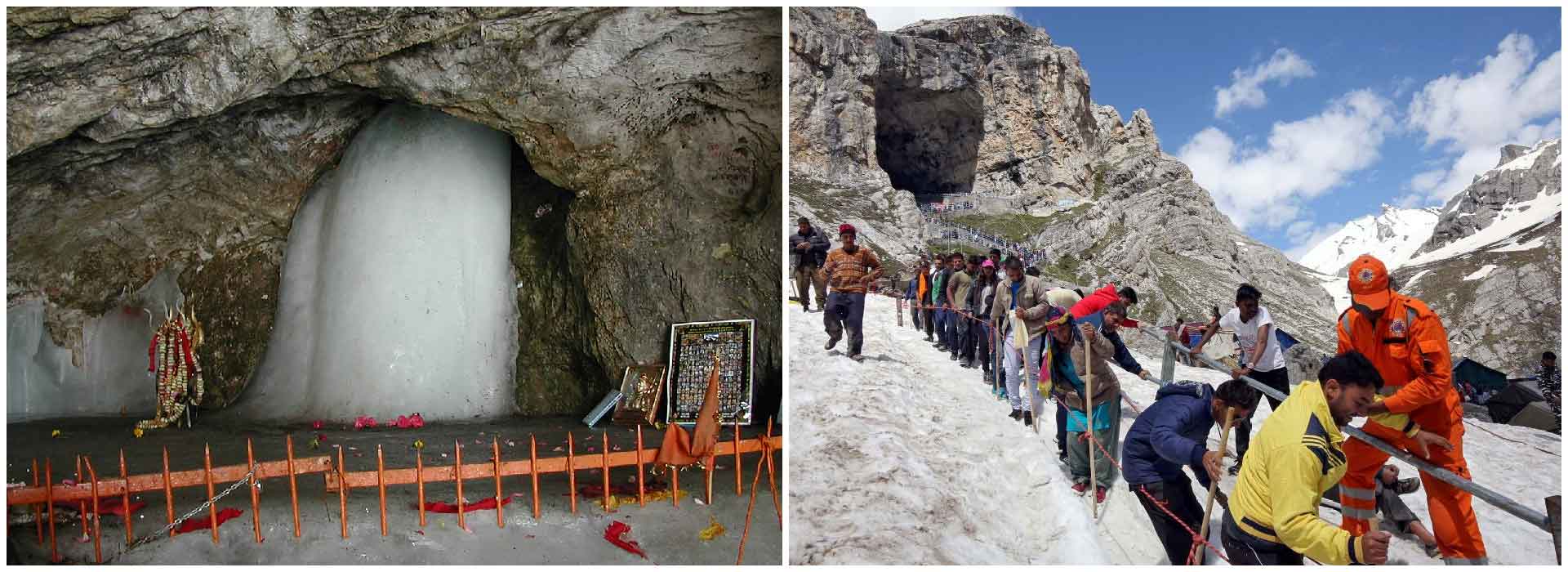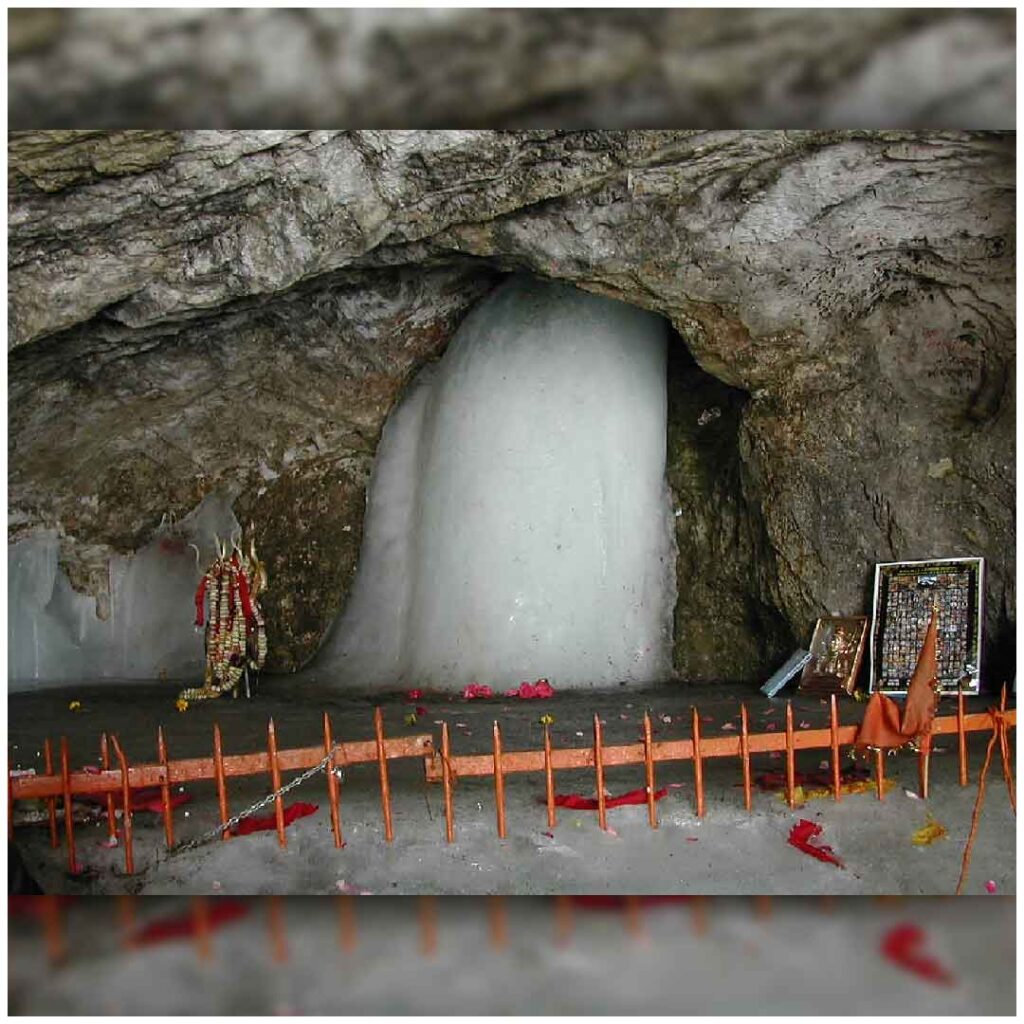Amarnath Yatra begins as first batch of pilgrims embark on journey to the sacred cave shrine

The eagerly awaited Amarnath Yatra has officially kicked off, marking the commencement of an annual spiritual journey that holds deep significance for millions of Hindu devotees. The first group of pilgrims has started their arduous yet rewarding trek to the sacred Amarnath Cave Shrine, nestled in the picturesque Himalayas of Jammu and Kashmir. This journey is not only a test of physical endurance but also a testament to the pilgrims' unwavering faith and devotion.
A Diverse Gathering of Devotees
Each year, the Amarnath Yatra draws a diverse group of pilgrims from across India and even beyond its borders. These devotees come together, united by their reverence for Lord Shiva, to visit the cave shrine where a naturally formed ice lingam – a symbol of Shiva – is worshipped. The Yatra typically spans over 40 days, beginning in late June or early July, and concluding in August. The timing of the Yatra coincides with the Hindu month of Shravan, considered highly auspicious for undertaking this pilgrimage.
Preparations for the Yatra
Preparation for the Amarnath Yatra is no small feat. Months before the official start, extensive arrangements are made to ensure the safety and well-being of the pilgrims. The Jammu and Kashmir government, in collaboration with various agencies, undertakes measures to provide medical facilities, sanitation, and security along the trekking route. Additionally, the Shri Amarnathji Shrine Board (SASB) plays a crucial role in managing the logistics and overall coordination of the Yatra.

Routes to the Shrine
Pilgrims have two main routes to choose from: the traditional Pahalgam route and the relatively shorter Baltal route. The Pahalgam route, although longer, is often preferred for its scenic beauty and historical significance. This route takes pilgrims through lush green meadows, serene rivers, and quaint villages, offering a glimpse into the region's rich cultural heritage. The Baltal route, on the other hand, is a steeper and more challenging trek, appealing to those seeking a quicker but more strenuous journey.
The Journey Experience
The experience of the Amarnath Yatra is deeply personal and transformative for many pilgrims. The journey tests their physical limits and resilience as they traverse rugged terrains and endure unpredictable weather conditions. Despite these challenges, the pilgrims' spirits remain high, fueled by their devotion and the camaraderie among fellow travelers. Along the way, they encounter makeshift rest stops known as langars, where volunteers offer free meals and refreshments, embodying the spirit of selfless service.
Reaching the Sacred Cave
Reaching the sacred cave shrine is the pinnacle of the Yatra. As pilgrims enter the cave, they are greeted by the sight of the ice lingam, which is believed to wax and wane with the phases of the moon. The atmosphere inside the cave is charged with reverence and awe, as devotees offer prayers and seek blessings from Lord Shiva. Many pilgrims describe this moment as profoundly spiritual, a culmination of their faith and perseverance.
Challenges and Risks
The Amarnath Yatra is not without its challenges and risks. The high-altitude trek poses significant health risks, including altitude sickness and hypothermia. To mitigate these dangers, the authorities implement strict guidelines and provide medical assistance at various points along the route. Additionally, the volatile political situation in the region necessitates heightened security measures to ensure the safety of the pilgrims.
Sustaining the Yatra
Despite these challenges, the Amarnath Yatra continues to thrive, drawing an increasing number of pilgrims each year. The Yatra's enduring appeal lies in its unique blend of physical adventure and spiritual fulfillment. For many, it is a journey of self-discovery, a chance to disconnect from the material world and connect with something greater.
Promoting Sustainable Tourism
In recent years, there have been efforts to promote sustainable tourism and environmental conservation during the Yatra. The authorities and various NGOs work together to minimize the ecological impact of the pilgrimage, advocating for responsible waste management and preservation of the natural surroundings.
Conclusion
As the first batch of pilgrims embarks on their journey, there is a palpable sense of anticipation and excitement. The Amarnath Yatra is more than just a pilgrimage; it is a celebration of faith, resilience, and community. For those who undertake this journey, it is an experience that leaves an indelible mark on their hearts and minds, a testament to the enduring power of faith and devotion.
Click to read the full article





